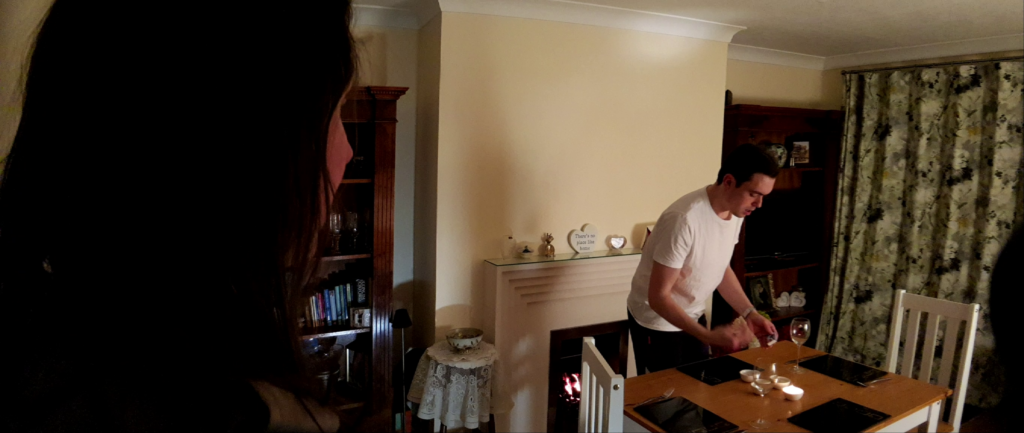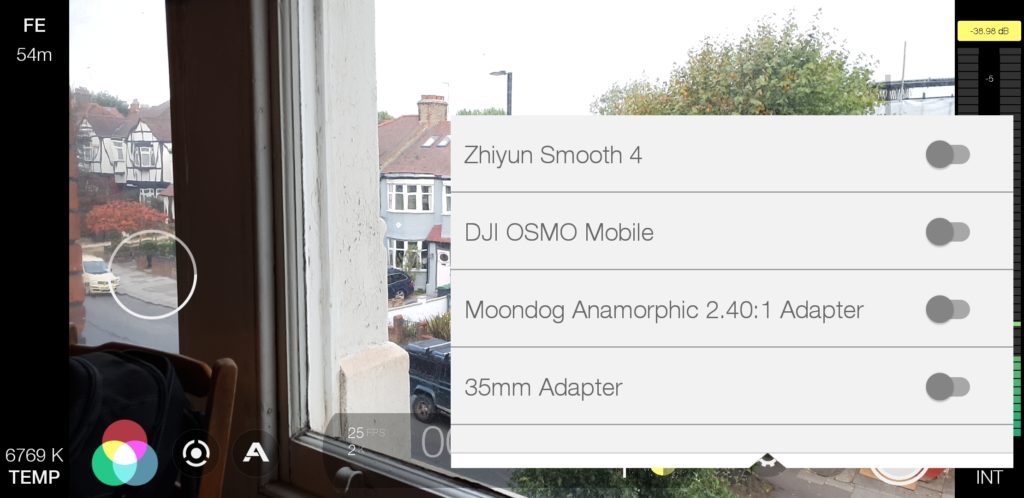Smartphone Lenses: Anamorphic
The majority of smartphone filmmakers consider lens attachments to be essential additions to their basic filmmaking kit. I haven’t included them in my Beginner’s Guide, because I think they can be an unnecessary distraction, especially if you’re just starting out.
However, once you have the basics of smartphone filmmaking down, you might want to try adding one or more lenses to your filmmaker kit. One of the most popular lens attachments is the anamorphic.
When I set out to make my first smartphone film, I had read much positive reaction to the Moondog Labs Anamorphic adaptor. This lens has been a game changer for many filmmakers turning to smartphones. Not only did Sean Baker decide to shoot Tangerine with iPhones because of it, but leading camera app, FiLMiC Pro, even has a setting specifically for the Moondog Labs Anamorphic.
So, I felt I had to try one. I was not using an iPhone, however, and that was the first issue. But, checking their website, I found a 37mm option. So I bought a clip with a 37mm thread, from Amazon.
Why does this lens attachment need a special setting in your camera app?
Because to achieve a wide ratio such as 2.40:1, light coming through the lens is squashed horizontally onto the camera’s sensor. The image must then be “un-squeezed”, otherwise everything will look taller and thinner, like in fairground hall of mirrors.
Some people get the widescreen effect simply by cropping their original image during the editing process. But this “cheat” does not reproduce the sexier aspects of anamorphic look, plus it results in a loss of image resolution.
Noam Kroll discusses the use of anamorphic lenses here:
“Although you can compose the exact same frame using either spherical or anamorphic lenses, you’ll ultimately need to crop your image in some way in order to achieve a wide aspect ratio when using a spherical lens, making it less desirable. For instance, a 2K image that’s cropped to a 2.39:1 (widescreen) aspect ratio, only has 858 lines of vertical resolution. On the other hand, an anamorphic lens is able to take full advantage of all 1152 lines of vertical resolution.”
But here’s why I don’t use the anamorphic lens any more.
The clip problem
When using the Moondog lens with a phone which isn’t an iPhone you need an alternative method of fixing it to the phone. The 37mm clip covers the exposure settings on FiLMiC Pro. Yes, there are ways around this issue.
- try attaching the anamorphic with a different mount. Moondog have a list here of different mounts for different phones (not up-to-date). The problem I have with this is the alternative mounts add bulk to the phone, which makes it impossible to use a gimbal. I also don’t like adding too much bulk to my phone.
- Use a 2nd phone to control FiLMiC Pro. There is a remote option, so you could control the exposure using a 2nd phone or device. But for me, again, this is an extra complication which undermines the advantage of smartphone filmmaking – simplicity and fluidity.
- remove the clip, fix the settings, replace the clip. Now you’re ready to film. Except, the lens will alter the amount of light hitting the sensor, so the exposure will be wrong.
- Use an alternative camera app. Moment also produce one. I’ve never used it (just installed it for $2) before, but from a quick look it doesn’t seem to have ratio or resolution settings. My guess is this app is best used by Moment lens fans. On first glance, it’s more of a marketing device than a serious camera app.
None of these options work for me. So I’m left with a choice – anamorphic lens or FiLMiC Pro?
Here is an outtake from You Have Been Chosen. In this take I managed to avoid the gimbal in shot issue.
Other issues
Although it’s a pretty simple device, it does add some burden to your shoot. You will be spending extra time fitting the lens, adjusting it, cleaning it, finding where you last set it down…
I also found 2 major issues when combining the lens with a gimbal. First, the extra weight means you need to add a counterweight to your gimbal (I used 3 £1 coins stuck on with Blu-Tack). Again, something else to fiddle with which slows you down. Second, the extra wideness brings into shot the front of the gimbal. So, unless you want a black blob moving up and down on the right hand side of the image, you need to angle the gimbal so you are holding it in an unnatural way.
While I was filming, I kept forgetting (even when we stuck white tape to it), so many of my shots ended up with gimbal in frame, which I then had to crop out in the edit. Below is a frame (ungraded) – to the right you can see the gimbal at the edge of the shot.

Note: since I have upgraded from the Samsung S8 to the S9, I find the gimbal is now in frame, even without any lens attachments. Presumably, the S9 has a wider lens than the S8.
The Moment Anamorphic Lens
Moment are a popular brand of smartphone lenses. They also do an anamorphic adaptor, which can mount on a their own phone case.
Moment Anamorphic Lens on Amazon
For those shooting with an android phone, there’s a little more information here at Droid Life. So, this case would fix the issue caused by the clip.
Read more: Moment Smartphone Lenses
There’s only been one (so far) YouTube Moment vs Moondog Labs Anamorphic showdown. It’s flawed, as the tester used 2 different phones, which makes it hard to tell whether the difference is because of the phone or the lens. But here it is anyway:
There’s also a Beastgrip Anamorphic lens.
Beastgrip’s Anamorphic lens is listed at $175. They also make a 37mm mounting plate, which can be used with lenses with a 37mm thread (such as the Moondog Labs Anamorphic).
Read More: Beastgrip Lenses for Smartphone
If you’re using an iPhone, it seems there’s less issues to overcome when adding an anamorphic adaptor. This is down to the fact that the iPhone market for accessory makers is still currently far greater than for Android. Plus, Android phones obviously come in many many shapes and sizes. Which just adds to the difficulty for accessory makers when it comes to design – the android market is fractured.
This becomes the self-fulfilling prophecy of Apple success: accessory makers focus on iPhones, people buy iPhones for the extra accessories, makers continue focusing on iPhone. Rinse and repeat.
If you’re really desperate to film with anamorphic, for the bendy lines and the lens flare, then go for it. But, until someone designs an android clip that works with FiLMiC Pro, certainly easier to use when combined with an iPhone.
Read Next: Best Smartphone Filmmaking Kit 2019.
Eager to learn more?
Join our weekly newsletter featuring inspiring stories, no-budget filmmaking tips and comprehensive equipment reviews to help you turn your film projects into reality!
Simon Horrocks
Simon Horrocks is a screenwriter & filmmaker. His debut feature THIRD CONTACT was shot on a consumer camcorder and premiered at the BFI IMAX in 2013. His shot-on-smartphones sci-fi series SILENT EYE featured on Amazon Prime. He now runs a popular Patreon page which offers online courses for beginners, customised tips and more: www.patreon.com/SilentEye


